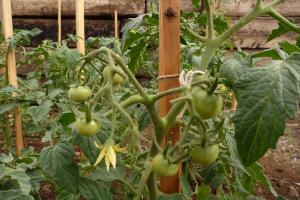Today Mongolians typically eat only boiled meat at every meal, year round, but this was not always true. In the days of Chingis Khaan, I am told that it was illegal to eat animals in the summer. Mongolians ate meat in winter and vegetable and milk products in summer.
When Mongolia was associated with the Soviet Union, they had large irrigated farms and produced enough vegetables for export. When the Soviet Union dissolved, Mongolia’s agriculture market crashed and individual family herding practice (still seen as the easiest/safest route to self-sufficiency) became nearly the sole occupation.
I worked with herders who lived on lands that were once great farms. You can still see irrigation channels from satellite photos. I was surprised when they asked me to teach them farming. Surely, people in the community must have once been farmers? It was bewildering. Research into the issue revealed that that the majority of international donor projects teach or fund farming and the requests for teaching are exponential.
My apartment had a large south-facing window, so I started a home vegetable garden with heirloom seeds carried from the USA. I sprouted seeds in egg containers, transferred them to plastic drink bottles, and finally into halved gallon jugs. The soil in Mongolia is exceedingly poor, but my work with the Mongolian Women Farmers Association meant that I had access to beautiful black organic compost that my plants loved.

From seed to sprouts in my apartment
When it came time to leave Mongolia, I began searching for a home for these plants and now my green babies are helping care for Mongolia’s babies. The Lotus Children’s Centre is a Buddhist residential and outreach service for abandoned children in Mongolia. The children at Lotus, eat nutritious meals heavy in vegetables. This year Lotus secured money to build greenhouses and teach the children gardening. My little garden of tomatoes, herbs, and flowers is now getting them started.
I just received a letter and this photo from Lotus. They report that my plants have been transplanted outside and are in the ground now.

What color will these become? Pink, purple, striped?
Everything is in fruit and flower now. The tomatoes are cold weather heirloom varieties from the North America, so the kids are in for a colorful treat soon! If all goes well they can save seeds and continue these works for years to come.




